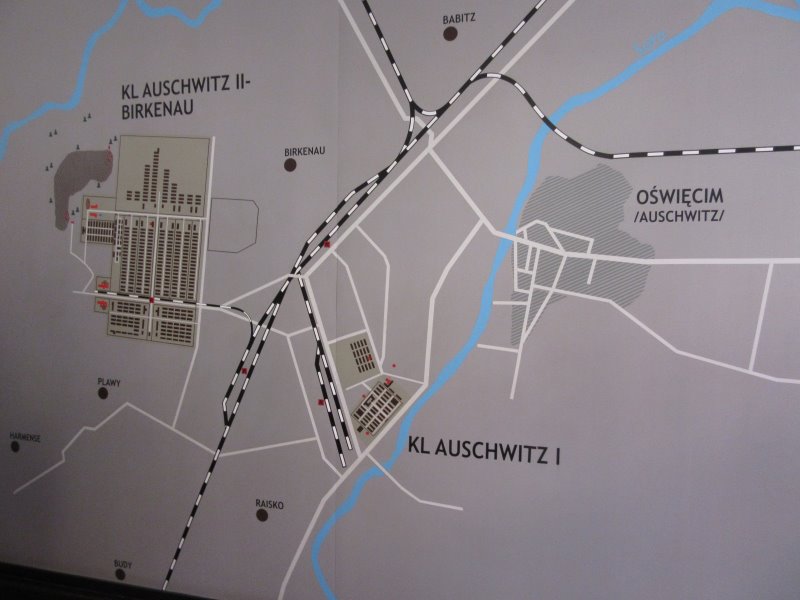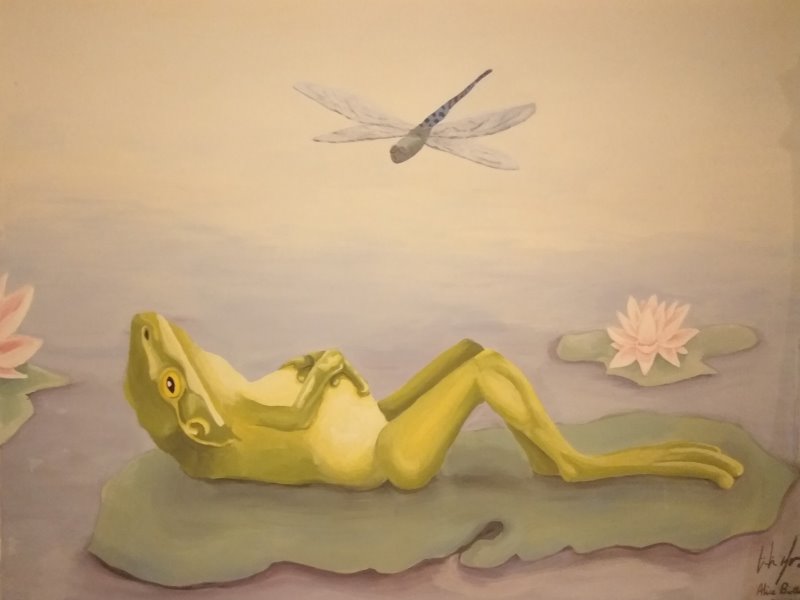Is it better to visit Auschwitz independently or with a tour guide? This post outlines the practical considerations of each option. I’ll try to stick to the facts, but there is some bias in my summary.
What are Auschwitz and Birkenau?
Names can be confusing. “Auschwitz concentration camp” is a network of camps consisting of three main camps and 45 labor subcamps. The three main camps are Auschwitz I (the original camp), Auschwitz II–Birkenau (concentration and extermination camp), and Auschwitz III–Monowitz. These camp names may be prefixed by KL (Konzentrationslager) for concentration camp. The “Auschwitz tour” includes (the now tourist attractions) Auschwitz I and Auschwitz II–Birkenau, but in conversation we shorten these to “Auschwitz” and “Birkenau.”
Auschwitz and Birkenau are the respective German names of Oświęcim (town) and Brzezinka (village), hence the names of the concentration camps.
When a tour guide talks about something that happened in Auschwitz, you don’t always know if they mean overall, in the original camp, in Birkenau, or even in a subcamp.
For those of you who need something visual:

Last thing, I promise. Technically, Auschwitz the tourist attraction is called the Auschwitz-Birkenau Memorial and Museum. Informally speaking, people will refer to Auschwitz I as “the museum” (which has a reputation of being very crowded and touristy) and Birkenau as “the preserved site.” I imagine you’d get blank looks if you talked to visitors about Auschwitz Memorial.
How a typical paid tour operates
There are lots of people advertising paid tours to Auschwitz around the city center—you couldn’t miss them if you tried. The cheapest tour I saw was 99 PLN, the most expensive was 135 PLN. Tours run for six hours. Various starting times are available if you ask around. Tour guides are privately arranged and may be leading over 20 people at Auschwitz (who might not have signed up the same way as you or went by the same vehicle). Thus, you will not have a tour guide during your transit. (But you can talk to the driver maybe.)
Approximate timeline
- Drive from Krakow to Auschwitz I. By private transport this takes 80 minutes or longer in case of heavy traffic.
- Toilet break. Can purchase small bottles of water, etc.
- Register and meet tour guide. (I believe tour guides are privately arranged, not randomly assigned.) Spend roughly two hours in Auschwitz I (“the museum”).
- Same toilet break as earlier.
- Drive from Auschwitz I to Auschwitz II–Birkenau, which is 3km away. Wait for (same) tour guide and other people to arrive.
- Spend roughly one hour in Birkenau, which will involve walking outside mostly. (Many people bring sunglasses.)
- Drive back to Krakow.
Officially, the tour at Auschwitz is meant to be four hours long. There is also a film at the museum, but you might not get to watch it on your particular tour. (Somethings vary by day and time due to the high volume of bookings.)
Touring Auschwitz I
Everyone is given headphones and a receiver to listen to the tour guide, who speaks through their own microphone. (This is because your tour guide might be a full room or two ahead of you and you also don’t want to hear the German tour running behind you.) You will not get to ask questions. The tour definitely feels rushed. The museum is rather crowded and you won’t get to see every building nor every room/photograph/caption within each building. If you take photographs it takes time to wait until people aren’t in your way, so you’ll lag behind the tour guide. Reception can be patchy if you get a bit behind. The tour guide will basically summarize some of the captions, skip some of the less interesting rooms, and provide better context of each building than the captions will offer (although often it’s just comforting to know there isn’t much context or logic behind the exhibits). Despite the tour being rushed and not seeing everything, you get enough of it to not feel like you’ve missed anything. But the main downside is that you never get to pause and take in any given room.
Touring Birkenau
Birkenau is much less crowded for various reasons. No more headphones either. Most of the tour is spent walking outside. You’ll see some of the things mentioned or shown in the museum. The tour guide will explain some things about Birkenau and also repeat a lot of what was said before in the museum. You might visit one barrack, take a look at the ruins of the gas chamber, and walk past a memorial before heading back. You can either take photographs, daydream, or stay up the front and try to ask any dying questions you may have. The proportion of Birkenau that you get to see/experience during a guided tour is less than 50%. (Two or three hours could be spent here if you’re willing to do the walking, though the barracks are preserved so you won’t find an explanation of the living conditions on your own.)
Regulations
Check the website for the exact up-to-date details, but here’s the general idea:
- Large backpacks or handbags are not allowed, and you will go through a security screening.
- Throughout April 2017 to October 2017, it is compulsory to be on a guided tour when entering the museum between 10am and 4pm (peak hours). For individual visitors, this means you would have to pay to join a guided group at the museum, but apparently this would include Birkenau too and transport to/from there.
- Visiting Birkenau is free and you don’t need to be with a tour guide.
Visiting Auschwitz independently
In order to visit Auschwitz and Birkenau independently the recommended method would be to go early in the morning by bus.
Some notes:
- The overall cost is two bus tickets for Krakow to Auschwitz I and the return trip. (Getting to Auschwitz from Krakow is better by bus if you don’t want to walk from the station.)
- “Tour for individuals without an educator.” During the peak season you have to book a free ticket for this on the official website. This has to be done weeks in advance since there are a limited number of places.
- If you don’t manage to get a free ticket, you can book and pay to join a tour in your chosen language and still save money compared to an organized tour. You could also ditch your group at Birkenau. You shouldn’t do that at Auschwitz I but it almost seems doable.
- There is a free shuttle between Auschwitz I and Birkenau. You’ll have to come back to Auschwitz I for the bus to Krakow after seeing Birkenau.
- It should be quite manageable to time your overall visit according to the bus schedules. Buses run regularly throughout the day so there is no risk of being stranded even for someone like me. During peak season/hours you may want to be early for buses to ensure you get a seat.
So should I go independently or with a tour guide?
Going on a paid tour takes the hassle out of organizing and planning. I wouldn’t necessarily say that it’s good value for ~100 PLN, but that the cost is low enough not to be much of a concern. If you’re on a budget (i.e., saving that money for a dozen shots of vodka), I guess it’s obvious what to choose. There are pros and cons to both choices, and what I’ll focus on here is about the experience. But either way I think all options, including partial and hybrid options, are reasonable. There isn’t much to be missed or that could go wrong.
– Whole thing is rushed; no stopping
– Might not see the film despite it being included in the tour package
+ See the most pertinent parts of Auschwitz
+ Rather crowded, which can slightly limit the tour
+ Content of the audio tour provides better context than the museum captions
+ Take as long as you like
+ Possibly see the film without paying
– Easy to spend too much time in the wrong places and you still won’t see everything
– Less crowd: better pace, better photos, maybe take prohibited photos
– Limited context/information with just museum captions
+ Can tag along with a tour group for free at Birkenau

